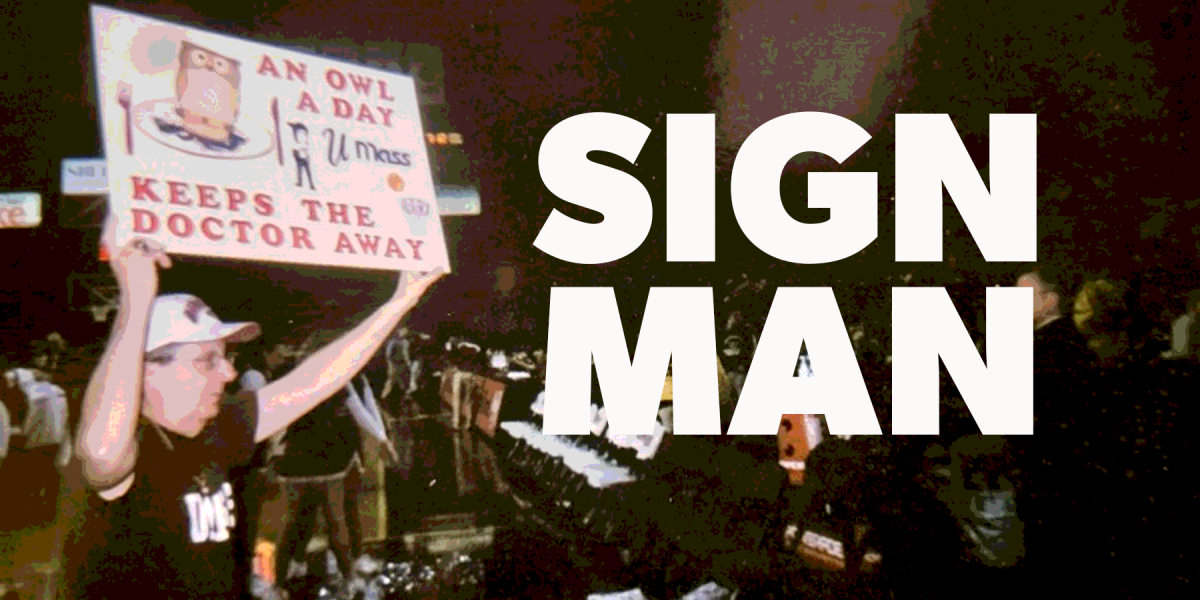As the sun began to set in the western sky, a group that would reach nearly a hundred people, gathered to listen to Professor Judith Young give a presentation on the equinox and to later watch the sun set through the Sunwheel.
Young began her presentation by explaining the origins of the Sunwheel. Inspired in the summer of 1992 by a Sunwheel on former Blackfeet Indian territory, she started to think about building one on the UMass Campus. For the next three years, she worked on trying to create one on campus but was stopped by bureaucracy. Finally, on Oct. 17, 1995 she found the right committee to go to and her plan to build the Sunwheel was unanimously approved.
In its first incarnation, the Sunwheel consisted of 12 stones placed to mark the four cardinal directions, and the summer and winter solstice sunrises and sunsets. It was later augmented in 1997 with eight medium-sized rocks to better allow visitors to see where these locations are on the horizon. However, Young was not satisfied with the Sunwheel yet. She wanted to get bigger stones, so that the Sunwheel would be accessible even during the winter, when the ground was covered in snow, and so that the wheel would reach closer to the horizon, allowing visitors an easier way to see their relationship with the sky.
Two years later, in 1999, she obtained the funding necessary to buy the rocks from the National Science Foundation. The next year, the stones were brought up from the Chester Granite Company, located in East Otis MA, to the site. So, after about a decade of work, the Sunwheel was near completion. During the next years, Young made small changes to the Sunwheel, like adding plaques explaining the celestial events and a stone to mark the location of X, a bright star that rises in the East.
After explaining the creation of the Sunwheel, she went on to explain how the sun’s progression across the sky works. She said that we see the sun go through a yearly cycle in much the same way a pendulum swings. During the Winter Solstice the sun rises on the right side of the horizon, then, as the year progresses, it rises further to the left each day. Around March 21, the sun is in the middle of its swing and will rise at due east, marking the vernal equinox. This leftward progression ends around June 22, the Summer Solstice, when the sun begins to make its trek back across the sky.
Besides being in motion, the sun also moves like a pendulum in its speed. When a pendulum descends toward the center, it gains speed. When it ascends up towards either side, it slows down, then stops at the apex. Such is the movement of the sun on the skyline. As the sun moves toward the center of the sky, or the equinox, it moves faster across the skyline. However, when it moves towards either of the solstices, it slows down and stops at the point of the solstice for two weeks.
After the presentation, people began to form two lines to see the sun set between the stones forming the West “gate.” After they watched the sunset, many people stayed to talk about it.
Andy Morris-Friedman from Hadley said: “The one thing I like best about the Sunwheel is: we get to participate in an event that people have been doing from the beginning of time.”
Rich Kowalski, a sophomore, also saw its connection to history. Having visited Stonehenge earlier he said, “It was interesting to see how society would make a Sunwheel today.”
Not everyone, however, who came was that excited about the historical significance of the event. Apryl Sabadosa, a junior double major in Continuing Education and Environmental Sciences said she came because, “my environmental-science teacher told us we have to go to one event.” She ended liking it though, explaining, “I like watching the sunset.”
Also at the event was Laura Young, daughter of Professor Young, who traveled down from New York where she teaches environmental education. She said that she has been a part of the Sunwheel experience since the beginning and loves it.
She summed the event’s success over the years as “My mom always has a new way to say it. It?s always a different presentation.”






